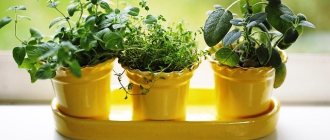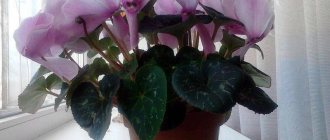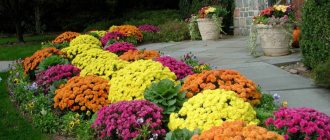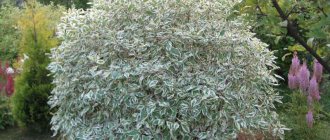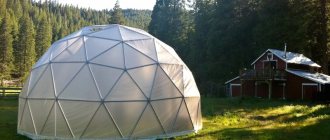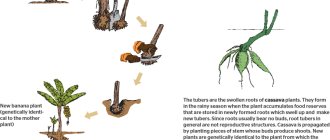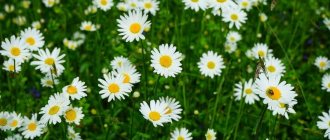Mini herb garden
Spicy herbs can be successfully grown on a kitchen windowsill in winter and significantly diversify the range of herbs available for sale. In addition to their aromatic benefits, many of them display different shades of foliage and are no less spectacular than established house favorites. If you want, grow them in separate pots, or if you want, make a fragrant mix in a wide bowl or a small balcony box. Special “vegetable garden” containers with pockets or holes are also sold. The activity is very fashionable and not without its benefits. The growing process is generally simple, but some special conditions still need to be created for fragrant herbs. Let's talk about everything in order.
Content
- 1. Where to get seeds?
- 2. Soil characteristics
- 3. Which container to choose?
- 4. Smart devices: installed and... forgotten
- 5. A few final tips
Beautiful, useful and uncomplicated. This is exactly how one can characterize a small “vegetable garden” with spicy herbs placed on the windowsill. Just look at the scent, reminiscent of early summer! And most importantly, any of the herbs can be picked and used for their intended purpose, thereby replenishing the winter lack of vitamins. So, the decision has been made, all that remains is to implement it.
Supplement with ready-made plants
To make fragrant compositions richer and more varied, it is worth visiting garden centers and nurseries (in the fall they announce discounts). Among the herbs, you can find varietal thymes - for example, the common Compactus, the lemon-scented Golden King and Silver Queen, oregano, including the yellow-leaved variety Aureum, sage, often its purple-leaved variety Purpurascens, angustifolia lavender, and various mints. By the way, the most common mint is peppermint, but the aroma of its leaves is too menthol-like; it is much softer and richer in other species, for example, short and slightly spreading curly mint, which is an ideal candidate for growing on a windowsill.
|
|
|
Among the indoor plants, you can add bay laurel and rosemary to this fragrant community.
Where can I get the seeds?
You can go to a nursery or specialty store to buy seeds. It is there that there is the widest selection of different varieties of herbs and leafy vegetables. If you don’t have the time and skills to plant seeds, seedlings of some herbs (rosemary, thyme, balsam, oregano) can be purchased in pots. You can bring seed material from your own dacha or ask your friends.
When buying seeds, you should prefer early varieties in order to enjoy the result as early as possible and take a sample from your own “plantation.”
Basil
Here's the thing, basil feels great as a container crop. Its many varieties come in all shades of green, red, and purple. And the aroma is lemon, cinnamon, anise. To successfully grow this herb, it is worth considering the following: • basil should be sown when stable warmth and long daylight hours are achieved (late April-May); • plant densely – this will make the plant more comfortable; • regularly trim the tops when the height reaches 15-20 cm, so that the plant actively branches and does not bloom. You can also sow basil in pots with tomatoes. These two grow well in pairs, enhancing each other's quality and protecting against pests.
Soil Features
Most herbs require nutritious, loose soil with good drainage. You can buy ready-made soil at a flower shop. It is not recommended to use vegetable or garden soil. Firstly, it may contain spores of pathogenic fungi and pathogens. Secondly, it is often too heavy, acidified, and has a low content of useful minerals and organic substances. If there is no other choice, garden soil must be sterilized in the oven or steamed.
IN THE PHOTO: You can grow watercress and salad mustard in any container on a damp napkin
However, there are plants that do not require soil to grow. Watercress, mustard greens, and onions can grow in water or a humid environment. So, for example, watercress and leaf mustard can be sown on a damp cloth spread in a wide but shallow container. A napkin can be replaced by a paper towel and even a layer of cotton wool, but constantly maintaining the moisture of this improvised substrate is a must.
It is even easier to grow onions “by feather”. The most common method: the bulb is immersed by a third in water and placed in a well-lit place. To avoid an unpleasant odor, it is enough to change the water regularly, preventing the onset of rotting processes. In addition, you can grow onions in such a way that only the roots touch the water. More on this in the next chapter.
Parsley
Where there is dill, there is parsley. This curly beauty has a less developed root system than its comrade, therefore it grows better in balcony conditions. However, here too it is worth giving preference to compact varieties. It can be planted in low pots, unlike dill, and more densely. You can also provide yourself with greens for the winter by digging up roots in your garden. It is better to take root parsley for these purposes.
Which container to choose?
Yes, almost any object with a bottom and walls can become a haven for the selected herb! An old tea cup, a jar of mayonnaise or yoghurt, or even half an egg shell can all be used to create a makeshift kitchen garden.
IN THE PHOTO: Even... eggshells are suitable as a growing container
A plastic jar with a lid is a simple and affordable container for distilling onions. A hole is cut in the lid so that the lower part of the onion is a third on the other side (you can also use a glass container with a neck diameter slightly less than the diameter of the onion). Water is poured into the jar so that it contains only the onion bottom with the rudiments of the roots. The only thing that remains is to monitor the water level, which should correspond to the length of the roots being formed. Over time, the bulb begins to “lose weight”, as the accumulated nutrients are consumed to form greenery. If you want to continue forcing the feathers, you can feed the plant: add a little organic fertilizer to the water (with a high nitrogen content, for example, based on bottom sludge).
IN THE PHOTO: To grow green onions at home, you can resort to “primitive” hydroponics
A plastic bottle with a capacity of 3–5 liters can be an excellent “plot” for growing onions, parsley, lettuce, dill and many other herbs. Round holes are cut in the walls of the bottle. For onions - wider, so that you can stick the tip of the onion out; for parsley and herbs - narrow. The technology is quite simple. A layer of drainage is poured onto the bottom, then a layer of soil up to approximately the first row of holes. Place the bulbs (parsley roots), the end with the growing point should stick out slightly from the hole. Cover with a layer of soil up to the next holes and repeat the operation.
IN THE PHOTO: Growing onions will bring a lot of joy to children
With seeds it’s a little more complicated; this is more suitable for those who have at least minimal experience in growing herbs. The bottle is filled completely with the substrate, and the seeds are planted in the prepared holes. They can be deepened no more than twice the width of the seed, but it is better to follow the manufacturer’s instructions. It should be noted that this method is only suitable for those herbs in which seed germination does not occur in the light: parsley, dill, lettuce, gulyavnik, white mustard.
Another assistant in growing your own vegetable garden on the windowsill is hydrogel . It can be added to the substrate: it will absorb excess water when watering, and then give it to the roots. You can do it more simply: place the swollen hydrogel in any suitable container and plant seeds on its surface. Watercress, leaf mustard, and valerianella are suitable for planting in this way. It is noted that the use of hydrogel brings the harvest time closer by about a week and allows you to water the plants less often. Important: for these purposes, only colorless hydrogel should be used.
IN THE PHOTO: Hydrogel as one of the substrate replacement options
Drainage is an important component of the potting mix for any container you choose to grow herbs in. A small layer of coarse sand or small pebbles at the bottom of the selected container will help form a healthy root system. This is especially important if it is not possible to make drainage holes to drain excess water.
Let's take it home from the garden
The easiest way to instantly get a herb garden on your kitchen windowsill is to grab a few plants from your garden before the autumn frosts arrive. Perennial spicy plants are suitable for this - Thyme, Sage, hyssop, oregano, mint, lemon balm, catnip, savory, as well as annual Basil. Select well-developed, healthy specimens, water them and transplant them in a clump, being careful not to damage the root system, into pots with fresh soil mixture. Large bushes can be divided or root suckers can be used for planting.
Spicy herbs on the windowsill
The diameter of the pot should be only 2-5 cm wider than the size of the plant's root ball, otherwise the roots, unable to cope with moisture, will rot. After replanting, spare no expense, trim the greens, leaving only 3 cm; for basil and hyssop, just pinch the shoots.
Tarragon requires a dormant period until winter begins. Repot the plant and leave it in the garden until the leaves die back. Transfer to a cool room for several days. Then place it on the brightest windowsill and feed it with organic fertilizers.
Smart devices: planted and... forgot
Growing seasonings at home, in principle, does not require much effort. However, you can simplify your life even more and use various gadgets that can take on basic plant care activities. How effective and expedient this is on such a scale is another question. But it’s interesting and “not like everyone else”!
IN THE PHOTO: Decorative flowerpots for your herbs
You can start immersing yourself in the world of devices with the most basic things: ordinary beautiful flowerpots, which are sold complete with soil and bags of seeds. To make it even more convincing, such pots are decorated with photographs and names of the plants that are proposed to be grown in them. Let’s not argue: it’s beautiful and convenient, but it can’t replace manual labor.
More technological devices can almost completely replace human input. For example, pots are offered that are not quite familiar in appearance, with an almost completely closed top. Only holes for sprouts are left in it. This automated device allows you to grow herbs and other plants using a nutrient solution. A cartridge with seeds and packages of fertilizers are included. The software is built directly into the flowerpot. It reads information from the cartridge and, in accordance with the data received, forms a nutrient solution. Cartridges can be replaced - they are also sold separately.
Another option is a device that provides not only the correct composition of the nutrient solution, but also illumination with phytolamps built into a kind of lid. A person can only pour water, pour out the seeds and watch the growth. Nutrition is supplied by the aeration method (see the description of the “aeroponics” method), using a fine mist consisting of water and nutrients.
IN THE PHOTO: The Aerogarden system is a compact type of hydroponics (aeroponics).
A little simpler and an order of magnitude cheaper is a gadget that allows for growing hydroponically . It contains lighting, a solution with a adjusted ratio of microelements and seeds. All you have to do is plug it into the network, and you can wait for the harvest.
A more acceptable option in terms of price and results obtained: a double pot with a water level indicator in the lower compartment. “Wicks” pass from the lower section to the upper section (wick method of watering). These are thin ropes along which water, as needed, rises into the substrate, to the roots.
Fans of “exotics” will like the device, which suggests using waste products of aquarium fish instead of fertilizers. The fish is placed below, in a transparent container with water. There is also a tube through which water feeds the roots of plants planted on the “second floor” in a regular substrate. Manufacturers claim that the method was adopted from the ancient Aztecs. Well, I must admit, organic matter from fish, from a health point of view, looks much more preferable than fertilizer from bags. And the device looks really beautiful. The only drawback: the fish is not included in the kit, you will have to buy it.
IN THE PHOTO: The small fish is an integral part of the complex - an almost inexhaustible source of organic fertilizers
TOP 10 herbs to grow in the kitchen
We compiled the rating based on the popularity of a particular plant in cooking and ease of cultivation.
1. Onion - the details of the process are described above. It remains to add that for forcing the feathers it is best to select bulbs of the same size. Before planting, remove the top dry covers. You can cut off the top - this will make the feathers appear faster.
2. Watercress is a completely undemanding plant. It can be grown in soil or water, in light or shade. No additional lighting required. The harvest can be harvested when the sprouts reach 5 cm in height. Watercress is consumed raw: added to salads, sprinkled on sauces, soups, sandwiches. The plant contains a lot of substances beneficial to humans.
3. Mustard greens are as easy to grow as watercress. By the way, you can plant these two plants in one container. You can eat mustard leaves either raw or after heat treatment. For example, as a seasoning for stewed meat.
4. Dill is a well-known and favorite seasoning. The plant is unpretentious, but preference should be given to early varieties. They produce a harvest already on the 25th day after planting. Otherwise, you will have to wait a month and a half for fresh greens.
5. Lettuce is a more demanding plant. Loves bright light and fairly high temperatures. In principle, it is not difficult to provide such conditions in the kitchen, but artificial additional lighting will be required.
6. Basil is a heat-loving plant that can brighten up your kitchen with its beautiful green and purple leaves. By planting several multi-colored species in one pot, you can create an interesting color composition. Harvesting a decorative crop won’t hurt: you can pinch off the bottom leaves or pinch off the tops. The latter stimulates the formation of side shoots and the formation of lush bushes. The optimal temperature for growing is +25–28°C.
IN THE PHOTO: Basil will help decorate the kitchen and will be a pleasant addition to many dishes
7. Coriander is an unpretentious plant and a popular seasoning. When growing, no special conditions are required. The main thing is to avoid stagnation of water or drying out of the soil.
8. Lemon thyme has a pleasant smell. By planting this undemanding perennial plant, you can enjoy an unobtrusive, subtle aroma with hints of lemon for several years.
9. Rosemary - lovers of Mediterranean cuisine should definitely have this plant on their windowsill. Perennial bushes delight with carved foliage and a spicy aroma. You can buy a young plant at a nursery or flower shop. Growing it yourself from seeds takes quite a lot of time and can be difficult.
10. Parsley , spicy herb. which can be grown both from seeds and by forcing from rhizomes. The second method will give faster results. Conditions for growth - warm room, plenty of light, balanced watering. Parsley does not tolerate indoor growing very well, but is very popular in our country.
Dill
It’s worth starting with something simple and beloved by everyone. Dill is one of the most common herb plants; in many gardens it successfully sprouts on its own, like a weed. What about the balcony? But here he is by no means a leader in successful growth. That is, it often does not feel very good in boxes and pots and develops sluggishly. To get a decent harvest of fragrant greens in cramped conditions, you should consider the following points: • choose varieties that are compact, low-growing, with late flowering, but lush greenery; • plant in deep boxes and pots (from 20 cm in height), because dill has a long root; • provide each bush with enough space, avoid crowding. A win-win option for getting dill greens is to dig up the root of an already mature plant in the garden and transplant it into a spacious pot. Cut off the green part. New branches will appear soon. This way you can provide yourself with fresh dill for the winter.
A few final tips
- Proper lighting is the key to success. Only onions and watercress do not need additional lighting. All other plants need long daylight hours. A sign of a lack of light are elongated stems.
- The hydrogel will help maintain water balance: it will first absorb excess moisture and then release it to the plant roots.
- Organize a drainage layer. Without it, water will stagnate in the soil, which will lead to rotting of the roots and death of plants.
- When choosing seeds, pay attention to planting material from well-known manufacturers with a large shelf life. It is better to buy seeds of early ripening varieties that are resistant to unfavorable conditions.
- It must be remembered that the air temperature on the windowsill is always lower than in the room. If it is blowing from the windows, you need to place the pots on a wooden or foam stand - this will protect the roots from freezing. A container of water placed between the pots will help neutralize the flow of dry air from the batteries.
- It is best to use organic or organo-mineral fertilizers. It is not advisable to exceed the dosage, but for young plants it is necessary to reduce it by half the recommended one.
- You don't have to buy pots to plant herbs. You can use available materials: plastic cups and bottles, tea cups, an old teapot or salad bowl.
Planting by cuttings
If there is not enough planting material, use cuttings. This is how oregano, thyme, mint, sage , and hyssop . For rooting, cut the apical shoots 10 cm long, remove the lower leaves and root under a cut plastic bottle or transparent plastic bag . To speed up the process, you can dust the ends with Kornevin or soak them in a Zircon solution (4 ml per 1 liter of water) for 14 hours. Good lighting and additional illumination with phytolamps significantly speeds up the rooting process. This method allows you to obtain young, well-leafed plants from mother plants, which in the lower part have already become lignified and produce little fragrant greenery.
The use of lawn in the interior of an apartment
Indoor lawns are widely used for decoration and landscaping, both in private residential buildings and for landscaping office and public premises. Such a living corner unobtrusively adds freshness, originality and beauty, and will be an excellent addition to an interior designed in any style: from minimalism to modern Scandinavian style.
An indoor lawn is widely used to accent certain areas; it functions as a connection with nature and will become a source of vigor and tranquility. Due to these advantages, natural lawn grass is valued much more than artificial grass.
Oregano
This plant also belongs to the herbs of Provence, but we are more familiar with it by the name oregano. A fragrant herb with soft leaves, delicate flowers and a pleasant aroma. It is used as a seasoning and is part of soothing mixtures and simply aromatic teas. Oregano takes up very little space and grows well in cramped conditions. Shade from too bright sun, water moderately, as needed. The germination rate of oregano seeds is not very high, so it is worth sowing thicker and then, if necessary, thinning out.
Growing herbs in the garden - table
This year I dream of creating a herb garden. I am particularly interested in Provençal herbs for use in the kitchen and those that can be added to tea. Please tell me which perennial and annual herbs to choose, which of them are grown as seedlings and in what time frame?
Victoria Derugo
The main components that make up Provençal herbs are rosemary, thyme, basil, peppermint, sage, oregano (oregano), garden savory and marjoram.
Of these, 8 in dried form make up spicy and aromatic mixtures, in which all the ingredients are perfectly combined with each other and perfectly complement each other.
At the same time, there is no clear proportion of this mixture; most chefs independently determine the recipe in accordance with their taste.
But besides the indicated spicy-aromatic plants, there are many others that also allow you to add an original taste to the prepared dishes. In recent years, such crops are increasingly found in summer cottages.
The list of them is constantly growing, but among them there are also those that were encountered in ancient times. Their uses are varied; they can often also serve as medicinal herbs.
On the other hand, without some experience, it is difficult to create an exemplary garden of aromatic crops. Therefore, in our first article on this topic, we will first present reference and information materials in the form of a table. In the upcoming issues we will try to talk about the agricultural technology of the most exotic aromatic crops. Follow our releases.
Link on topic: Spicy herbs in the country house and garden - cultivation and care
Spicy and aromatic crops
| Culture | Seeding rate, g/10 sq.m | Sowing (planting) scheme, cm | Seed placement depth, cm | Sowing (planting) dates | Characteristic |
| Anise | 10-12 | 45×5 | 2-4 | III ten days of April | Annual. Fresh leaves are used for preparing salads and side dishes, fruits and oil from them are used for flavoring baked goods, confectionery products, meat products, fish, soups, sauces, for pickling cucumbers, cabbage, as well as for making kvass at home. |
| Basil | 5-6 | 45×20 | 1-1,5 | I ten days of June (seedlings) | Annual. Used as a seasoning for soups, salads, vegetable and meat dishes. Young shoots are eaten raw. |
| Oregano (oregano) | 3 | 70×40 | 1-1,5 | II ten days of May (seedlings), October – with seeds before winter | Perennial. Green shoots and flowers are used for pickling cucumbers and tomatoes, and added to vegetable soups, sauces and meat dishes. Young stems and leaves, after scalding them with boiling water, are used for filling pies. |
| Snakehead | 4-6 | 45×20 | 2-3 | I-II ten days of April | Annual. In fresh and dried form, it serves as a seasoning for various vegetable and meat dishes. Dried herbs can be added to tea, compote, homemade kvass, and used for pickling cucumbers and tomatoes. |
| Hyssop | 3-4 | 45×20 | 1-1,5 | Spring, summer, before winter | Perennial. Dried leaves and flowers are used as a seasoning for meat and vegetable soups, sauces, stews, roasts, cold appetizers, and salads. Dried hyssop improves the taste of legume dishes. Used for pickling olives, cucumbers and tomatoes and for preparing a soft drink - sherbet. |
| Chervil | 4-5 | 45×10 | 1-2 | I ten days of April | Annual. Fresh greens (after cooking they lose their value) are used with sauces for fish, potato soups, salads, and meat dishes. It tastes good with green salad and peas. |
| Coriander | 10-18 | 45×5 | 3-4 | II-III ten days of April | Annual. Greens add flavor and aroma to vegetable salads, soups, fried meats, fish, and various sauces. The fruits are used in marinades, vegetable and meat dishes. |
| Lovage | 4-5 | 70×20 | 2-3 | I-II ten days of April | Perennial. Parts of the plant are added to meat soups, salads, sauces for vegetable, meat and fish dishes. Dried and crushed seeds, roots and leaves add a mushroom flavor to dishes. Candied fruits are made from fresh roots and jam is made. |
| Marjoram* | 3-4 | 45×10 | 1-1,5 | before winter | Perennial. Used in the preparation of soups and meat dishes. The herb is used for pickling cucumbers and tomatoes, and the powder from dry leaves is used for making sausages. |
| Melissa | 5-6 | 45×20 | 1-1,5 | II-III ten days of April | Perennial. Leaves and young shoots, fresh and dry, are placed in omelettes, salads, fish dishes, and used for pickling vegetables. Add to tea. |
| Peppermint** | 110 | 70×15 | 8-10 | Spring Summer | Perennial. Used as a spice for salads, cheeses, vinaigrettes, soups, vegetable and fish dishes. Widely used for pickling cucumbers. |
| Rosemary* | 4-5 | 80×100 | 0,3-0,4 | I ten days of June (seedlings), end of June - cuttings | Perennial. Used for soups, vegetable, meat and fish dishes. Pairs well with thyme and marjoram. |
| Thyme | 4-5 | 45×15 | 1-1.5 | In spring, before winter | Perennial. Aromatic, vitamin-rich leaves are used as a spice. It improves taste, imparts aroma, and gives dishes a bitter taste. |
| Caraway | 8-10 | 45×5 | 2-3 | Spring Summer | Biennial. Fresh and dried fruits are added to vegetable salads, meat and fish dishes, sausages, when salting lard, cabbage, cucumbers, and tomatoes. Young stems, leaves and roots are added to salads and soups. |
| Common fennel | 10 | 45×5 | 2-4 | Before winter, 1st-2nd ten days of April | Perennial. Greens and onions are added to salads and soups. Dried seeds are used in fish and meat dishes, and are used for canning vegetables. |
| Garden savory | 5 | 45×20 | 1-2 | II-III ten days of April | Annual. Dried leaves are used to prepare mushroom, meat and fish dishes. Young leaves from the tops of the stems are used to season salads. |
| Sage | 10 | 50×30 | 3-4 | End of May (seedlings) | Perennial. Add fresh and dried leaves to vegetable omelettes, to flavor jams and pickles. |
| Estra gon** | 35-40 | 70×40 | – | May - dividing the bush, June - cuttings | Perennial. Fresh leaves are used as an appetizer or side dish for meat and egg dishes, added to vegetable salads, used in pickling cucumbers, tomatoes, making marinades, sauerkraut, soaking apples and pears. |
* The culture is very demanding of heat. Cultivation on insulated soil and in a greenhouse is possible.
** Vegetatively (by cuttings), tarragon - also by dividing the bush.
© Candidate of Agricultural Sciences Alexander Vladimirovich GORNY answered the reader’s question
Below are other entries on the topic “Do-it-yourself cottage and garden”
- Key indicators of growing seedlings: Memo for those growing seedlings -...
- Main indicators of sowing and planting seedlings: Sowing and planting seedlings -...
- Memo on the use of drugs to control pests and diseases: Table of drugs to control…
- Timing for sowing seeds and planting seedlings - memo: Timing for sowing seeds and planting...
- Early and late cabbage - how to distinguish: The difference between early cabbage and late...
- Picking seedlings (table): Picking seedlings Many gardeners are trying to pick...
- Sowing biennials: timing - a reminder for the gardener: When to sow biennial flowers What kind of flowers...
Source: https://vsaduidoma.com/2016/04/20/vyrashhivanie-pryanyh-trav-v-sadu-tablica/
Thyme
Also known as thyme, it belongs to the herbs of Provence. Who doesn’t know the amazing taste and aroma of tea with the addition of this plant? Also, all parts of it are an excellent seasoning for meat, fish, and poultry dishes. The notes of thyme are especially excellent at highlighting the taste of fatty meat and game. Thyme has thin, creeping stems, small leaves and flowers collected in elongated inflorescences. All external parts of the plant have aroma and beneficial properties. It does not require too much space, grows and develops well even in a liter pot. Thyme likes light soil without excess fertilizer, moderate watering and sun.
Mint
The plant has many varieties, and they all do well in boxes and pots. The plant is compact and unpretentious. Valued as a source of essential oils, it has a sedative effect. Therefore, it is indispensable in soothing teas and many cold drinks. Mint loves bright, but diffused light; you should not place it under the scorching sun. The soil is light, with the addition of sand. Water abundantly, but not every day. Soft mint leaves have a slight pubescence, so you should not spray it unless absolutely necessary.
Lighting, watering and fertilizing
If planting will be done in winter or autumn, when the greenery will need additional lighting, you can use a lamp. The light rays should be directed not at the plant itself, but at an angle. During the heating season, it is necessary to take care of optimal air humidity.
During the first days, the soil with seeds must be watered and fertilized abundantly; if necessary, the soil must be enriched with microelements.
In the future, watering should be done once a week, when the soil is dry.
What can you grow at home?
1. Of course, greens and herbs . They are relatively easy to grow; you can start your gardening experience with the least demanding specimens. And how pleasant it will be in winter to eat fresh herbs, inhale spicy aromas, brew fresh herbs into tea, and take aromatic baths. Greenery will please our eyes, provide us with vitamins and bring a little bit of spring and summer into the house.
The most popular herbs and spices for growing at home are:
- Green onions
- Parsley
- Dill
- Basil
- Cilantro
- Thyme
- Mint
- Melissa
- Spinach
- Sorrel
You can also grow lavender, rosemary, tarragon and other plants
2. A more difficult task would be to grow vegetables in an apartment , but there is nothing impossible about it. The network is replete with photographs shared by proud amateur gardeners who were able to grow and, importantly, harvest tomatoes, cucumbers and peppers right in their apartment. So, if you don’t have a summer cottage, but the spirit of gardening is in your blood, feel free to start planting your own home garden.
What kind of vegetables do people grow at home:
- tomatoes (most often cherry tomatoes, but sometimes other varieties of tomatoes)
- cucumbers
- bell pepper
- potatoes (can you imagine??!)
- sweet potato
- mushrooms
- onion
- garlic
3. Exotic lovers will also be able to apply their strengths in a direction that interests them. And in this matter nothing is impossible. Our resourceful people grow lemons, kiwis, pineapples, tangerines, palm trees and other plants unusual for our area at home.
Of course, when getting such pets, you need to be prepared that they can grow to significant sizes and keeping them in an apartment can be problematic. So, before you decide to grow some exotic, you need to carefully study what can grow from it :)
Tarragon
Also known as tarragon. A spicy addition to many dishes and the most important component of the well-known emerald drink. It germinates well when sown superficially on moist soil; the seeds are small. Germination can take up to 3 weeks. The optimal soil for tarragon is light, non-greasy, with the addition of sand, without an excess of organic fertilizers. Watering is moderate. The plant feels good on a sunny windowsill, but in very hot weather it is better to shade it. The problem with growing tarragon at home is that each specimen has a different intensity of aroma. And you can never guess in advance whether a bush will be fragrant or not. Well, it is useful in any case.
Dimensions and location selection
It is important to determine how much greenery you plan to grow. The required amount of space that will need to be allocated for planting will depend on this.
If you plan to do a large planting, you can use several window sills and divide the greenery into types.
To have fresh greens all year round, it is necessary to equip the chosen location and create the necessary climatic conditions.
Home greenhouse on a stepladder
If the window sills are small, the coffee tables are occupied, or you just want something new, then create a mini-greenhouse right on a stepladder or old staircase. Pre-paint the stepladder in the desired color. You can also store books and any other decor on it besides flowers or pots of live grass.
TIP: Scandinavian, modern and minimalist interiors will suit any variation of pots - from metal and mirrored to old wine bottles. And pots made of dark clay and ceramics will fit into classic interiors.
Suitable here: https://dg-home.ru/catalog/vazy/
Home greenhouse on a stepladder
Home greenhouse on a stepladder
Home greenhouse on a stepladder
